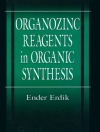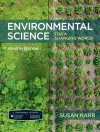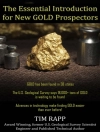Incorporation of particular components with specialized properties allows one to tailor the end product’s properties. For instance, the sensitivity, burning behavior, thermal or mechanical properties or stability of energetic materials can be affected and even controllably varied through incorporation of such ingredients. This book examines particle technologies as applied to energetic materials such as propellants and explosives, thus filling a void in the literature on this subject.
Following an introduction covering general features of energetic materials, the first section of this book describes methods of manufacturing particulate energetic materials, including size reduction, crystallization, atomization, particle formation using supercritical fluids and microencapsulation, agglomeration phenomena, special considerations in mixing explosive particles and the production of nanoparticles. The second section discusses the characterization of particulate materials. Techniques and methods such as particle size analysis, morphology elucidation and the determination of chemical and thermal properties are presented. The wettability of powders and rheological behavior of suspensions and solids are also considered. Furthermore, methods of determining the performance of particular energetic materials are described.
Each chapter deals with fundamentals and application possibilities of the various methods presented, with particular emphasis on issues applicable to particulate energetic materials. The book is thus equally relevant for chemists, physicists, material scientists, chemical and mechanical engineers and anyone interested or engaged in particle processing and characterization technologies.
Cuprins
NEW ENERGETIC MATERIALS
Introduction
Application Requirements
New Energetic Materials
Conclusion
SIZE REDUCTION
Fundamentals of Size Reduction
Size Reduction Processes
CRYSTALLIZATION
Fundamentals of Crystallization
Crystallization of Energetic Materials
Simulation
CRYSTALLIZATION WITH COMPRESSED GASES
Introduction
Rapid Expansion of Supercritical Solution
Supercritical Antisolvent Precipitation
Precipitation of Energetic Materials by Supercritical Fluids
Conclusions and Perspectives
SIZE ENLARGEMENT
Agglomeration
Microencapsulation and Coating Processes
MIXING
Introduction
Theory
Type of Mixers
Mixing Time and Efficiency
Sequence of Addition of Ingredients
Scale Effects
Conclusions
NANOPARTICLES
Nano-structured Energetic Materials using Sol-Gel Chemistry
Detonation Synthesis of Ultrafine Diamond Particles from Explosives
ALEX Nanosize Aluminum for Energetic Applications
Pneumatic Production Methods for Powdered Energetic Materials
PARTICLE CHARACTERIZATION
Particle Size Analysis
Properties of Powders
MICROSTRUCTURE AND MORPHOLOGY
Introduction
Defects of Explosive Particles
Characterization of the Microstructure by X-ray Diffraction
Composite Explosives as Probed with Microscopy
THERMAL AND CHEMICAL ANALYSIS
Characterization of Energetic Materials by Thermal Analysis
Characterization of Energetic Materials by NMR Spectroscopy
Chemical Decomposition in Analysis of Shock Wave Synthesis Materials
Conclusion
WETTABILITY ANALYSIS
Introduction
Determination of Surface Energy
Surface Characterization using Chromatographic Techniques
RHEOLOGY
Stationary Shear Flow
Flow Behavior of Fluids
Non-stationary Shear Flow
Rheometers
Rheology of Suspensions
Gel Propellants
Rheology as a Development Tool for Injection Moldable Explosives
Computer Simulation of Rheological Behavior of Suspensions
Rheology of Solid Energetic Materials
Injection Loading Technology
PERFORMANCE OF ENERGETIC MATERIALS
Influence of Particle Size on Reactions of Energetic Materials
Defects of Explosive Particles and Sensitivity of Cast Formulations
A New, Small-scale Test for Characterizing Explosive Performance
Diagnostics of Shock Wave Processes in Energetic Materials
Diagnostics for the Combustion of Particle-containing Solid Fuels with Regard to Ramjet Relevant Conditions
Despre autor
Dr. Ulrich Teipel, 45, Verfahrenstechniker und bisheriger stellvertretender Leiter des Produktbereichs ‘Energetische Materialien’, wechselt vom Fraunhofer-Institut für Chemische Technologie ICT in Pfinztal an die Georg-Simon-Ohm Fachhochschule Nürnberg, um dort den Lehrstuhl für Mechanische Verfahrenstechnik, Partikeltechnologie und Fluidmechanik zu übernehmen. Die offizielle Berufung erfolgte durch den Rektor der FH Nürnberg, Professor Dr. Herbert Eichele im Auftrag des Bayerischen Staatsministers für Wissenschaft, Forschung und Kunst, Dr. Thomas Goppel.
Nach seinem Maschinenbau-Studium an der RWTH Aachen setzte Ulrich Teipel seine wissenschaftliche Laufbahn 1991 im ICT mit Arbeiten zur mechanischen Verfahrenstechnik fort, promovierte extern an der Universität Bayreuth und wurde 1996 zum stellvertretenden Leiter der Abteilung ‘Energetische Materialien’ des Fraunhofer ICT berufen. Er hat dort insbesondere die Partikeltechnologie ausgebaut und sich einen hervorragenden Ruf in der mechanischen Verfahrenstechnik erarbeitet, unter anderem auch durch die Begründung der ICT-Kongressreihe ‘Partikeltechnologie’. Er wird dem Fraunhofer ICT im Rahmen einer vertraglich vereinbarten Zusammenarbeit weiterhin eng verbunden bleiben und dort die entsprechenden wissenschaftlichen Arbeiten betreuen.












